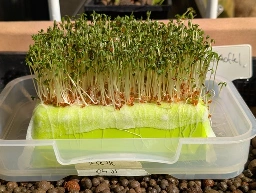Why are the leaves of my bell pepper plant so crinkly?
 Günther Unlustig 🍄 @ Guenther_Amanita @slrpnk.net Posts 268Comments 553Joined 1 yr. ago
Günther Unlustig 🍄 @ Guenther_Amanita @slrpnk.net Posts 268Comments 553Joined 1 yr. ago

You are not a dumpster fire...
Nanu? Wieso riecht meine Essenslieferung so würzig? Und wieso wächst da Pizza in meinem Growzelt?
How can I analyse the chemical and biological composition of my soil with home methods?
Meine Phacelia blüht endlich!
This is Semi-Hydro - My favourite simple passive hydroponic technique explained
❔ Gesucht: Waschmaschine (JETZT)
A new patient arrived at the plant hospital. Do you think my grandma's Phalaenopsis orchid can be revived?
My balcony setup 2025 - Or, how I call it, peak German efficiency. Follow me around in my 8 m² jungle, Part 1 - SLRPNK
Wenig Platz, viel Grün - Ein Rundgang auf meinem Balkon, Teil 1
My balcony setup 2025 - Or, how I call it, peak German efficiency. Follow me around in my 8 m² jungle, Part 1

How does the soil feel? Has it been overly wet in the last days?
Do you fertilize it?
Might be overwatering, (potassium?) deficiency, or heat stress. Probably a mix of those.